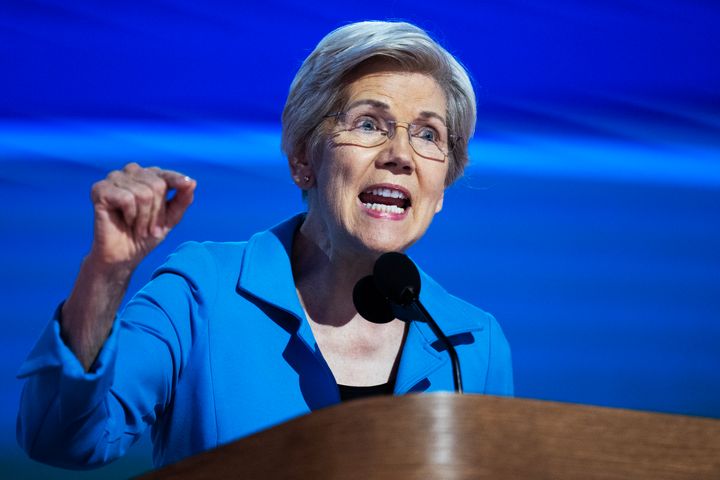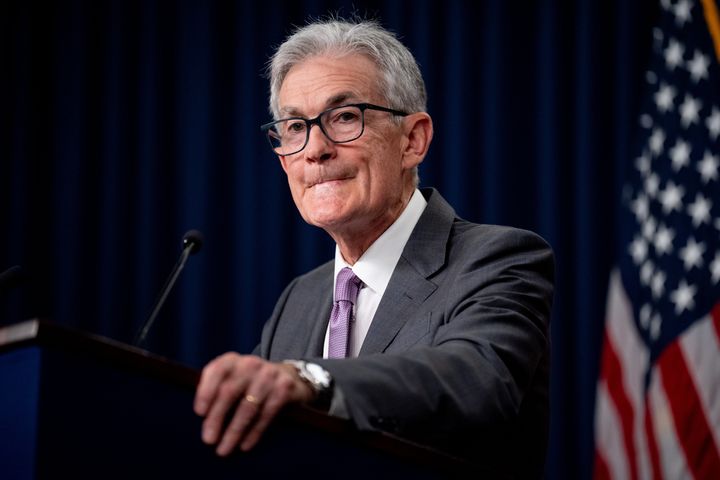WASHINGTON ― The Federal Reserve is set to cut interest rates Wednesday, revving up the economy in the pivotal months ahead of the Nov. 5 presidential election.
Whether the Fed will cut rates is not in doubt. But the size of the rate cut, the first since March 2020, is up in the air, amid broader uncertainty about the strength of the labor market and the Fed’s own willingness to juice the economy. A larger rate cut could draw the ire of former President Donald Trump, who has repeatedly threatened the Fed’s independence.
“They usually try to avoid making changes very close to an election, but sometimes the riskiest thing to do is nothing,” said Erica Groshen, a senior economics advisor at Cornell University and a former vice president in the research and statistics group of the Federal Reserve Bank of New York.
“The fact that they’re willing to move suggests that they’re seeing very clear signals that they don’t want to ignore,” Groshen told HuffPost, “and the biggest risk comes not from actually making those changes, but from political actors who would want to launch attacks on them that are baseless.”
Progressives, however, argue the risk of a recession is too great to let Trump’s threats get in the way. Sen. Elizabeth Warren (D-Mass.), a frequent critic of Federal Reserve Board Chair Jerome Powell, said the Fed should cut rates aggressively.
“The Fed makes it more likely that the U.S. will end up in recession every day that they delay, or if they do just a small rate [cut] that indicates they’re trying to keep a tight rein on an economy that doesn’t need that kind of restraint,” Warren told HuffPost. “It’s just that straightforward.”

The central bank hiked rates at a fast pace starting in 2022, in an effort to stop rapid inflation of consumer prices. With prices now rising at nearly pre-pandemic rates, a rate cut of any size would amount to something of a “mission accomplished” banner for the Fed.
Many economists expected the rate hikes to cause widespread layoffs, but unemployment has remained historically low, as the economy seemingly achieved the so-called soft landing Powell and his allies had envisioned.
Unemployment has risen modestly to 4.2% while the consumer price index, the lead measure of inflation, indicates prices have risen just 2.5% in July compared to the previous year ― the lowest increase since February 2021, and close to the 2% level considered ideal for maintaining low unemployment and price stability.
“They’ve done a great job so far. We’ve gotten closer to a soft landing than we’ve had with monetary policy to slow inflation in the past,” Groshen said.
But Lindsay Owens, executive director of the progressive Groundwork Collaborative think tank, said it was too soon to break out the party streamers and “declare full victory.”
“It is probably OK to say that the war on inflation has been won, but I think we’ve got to wait a little bit longer to make sure we’re in the clear on the labor market,” she said.
With voters still unhappy about the nation’s economic performance, the White House is eager to point out its successes in the closing weeks of the campaign season.
National Economic Adviser Lael Brainard, who previously served on the Fed’s board of governors, defended the administration from criticism that its response to the start of the COVID-19 pandemic was too expensive and that it created the inflation the Fed has since worked to get under control. The spike was caused by several factors, she argued.
“The fact that inflation came down while employment continued to expand provides good evidence that the inflation surge was associated with several overlapping shocks associated with the pandemic and Russia’s invasion of Ukraine that dissipated over time,” Brainard said in prepared remarks to the Council on Foreign Relations this week.
Higher interest rates fight inflation by making money more expensive to borrow, which causes businesses and households to borrow less and spend less. That in turn results in businesses slowing price increases as a way of keeping their customers. Lower rates could spur business investment, make new mortgages more affordable and boost hiring.
Trump suggested in an interview with Bloomberg last month that the Fed shouldn’t cut rates before the election, though he’s spoken of it little since then.
“Maybe they will do it prior to the election, prior to Nov. 5, even though it’s something that they know they shouldn’t be doing,” Trump said.
As president, Trump frequently demanded Powell cut rates. Since leaving the White House, he’s suggested presidents ought to have more sway over the central bank.

There’s not much doubt that a rate cut will come. Powell signaled in an August speech that inflation had slowed enough to warrant a change in monetary policy.
“My confidence has grown that inflation is on a sustainable path back to 2%,” Powell said, explaining that the easing of supply constraints, alongside the Fed’s efforts to reduce demand, was the major factor driving this improvement.
“The time has come for policy to adjust,” he said.
The biggest question Wednesday is how much the Fed’s governors will cut its main rate. Most market analysts expect a quarter-percent reduction, while progressives have been calling for more. Bond traders as of Tuesday afternoon were increasingly betting on a half-point cut.
Warren has harshly criticized Powell for raising rates more aggressively than she believes necessary and waiting too long to pivot to cuts. In a letter on Monday, she urged Powell to cut rates by three-quarters of a percent.
“Employment numbers adjust slowly, so the Fed should frontload rate cuts to avoid sliding towards a potential crisis,” Warren said in the letter, with Sens. Sheldon Whitehouse (D-R.I.) and John Hickenlooper (D-Colo.).
But starting with a relatively large cut of half a point or more would pose its own risks, according to Neil Shearing, group chief economist with London-based analysis firm Capital Economics.
“If officials opted for the larger cut, it might be interpreted as a sign that the Fed knows something worrying about the economy that markets don’t. The reaction in markets would therefore be uncertain,” Shearing wrote in a research note for clients.
Groundwork’s Owens said the data shows monetary policy is too tight now and has been too tight for a while, justifying a bigger cut. One reason rates are still too high, she said, may be politics — and fears among Fed officials that the cut will be seen as an effort to help Harris win in fall.
“You’ve got to wonder why we’re as far behind the eight ball as we are,” Owen said, estimating the “neutral” range for the Fed’s key interest rate would be around 2.5% instead of above 5% currently.
“I’m not exactly sure what’s going on here,” she said.
Disclaimer: The copyright of this article belongs to the original author. Reposting this article is solely for the purpose of information dissemination and does not constitute any investment advice. If there is any infringement, please contact us immediately. We will make corrections or deletions as necessary. Thank you.
